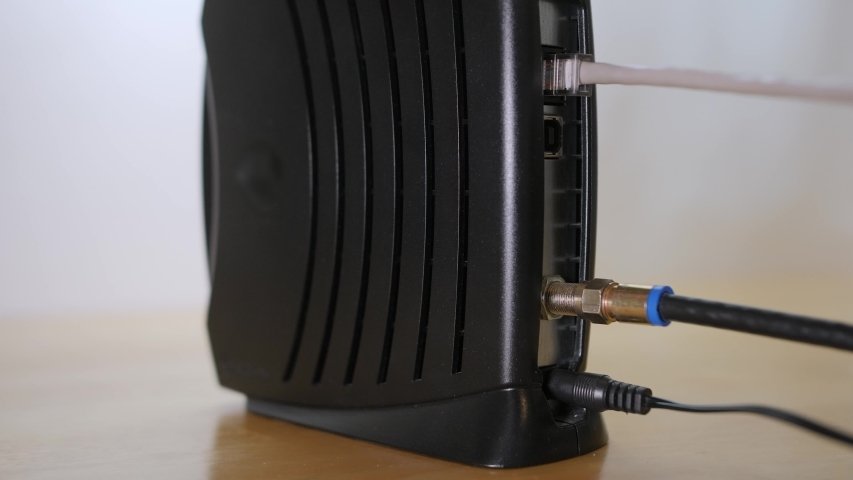What Is a Cable Modem and How Does It Work?

Mon, Sep 20, 2021 02:42 AM
These devices serve as the backbone of your company's high-performance communication systems, with capabilities that extend beyond serving as an internet gateway.
To avoid major hassles down the road, learn the fundamentals of how cable modems function, as well as what modem features and terminology to look for when outfitting your office or changing your Internet service provider.
Also, Read: How to Watch TV Without Cable in 2022?
What Is a Cable Modem and How Does It Work?
Cable modems are common equipment that connects your computer to your Internet service provider (ISP). A cable modem, unlike other types of modems, uses coax cable, the same infrastructure that carries television programming to our businesses and homes, to a proxy that connection instead of a phone or DSL line.
A cable modem can provide multi-channel voice, internet, and television access in both home and business settings, and in most cases under a single consolidated service contract.
Related
Ways How To Save Money On Your Broadband
Top 5 Best WiFi Extenders of 2021
What Is a Modem and How Does It Work?
Cable modems are essentially digital translators. They receive data signals from your ISP's network and quickly convert them to a digital "language" that your routers may spread over your local network via wired or wireless connections.
Cable modems use coaxial cables and an ethernet cord to connect directly to computer devices or a network router to make that crucial conversion. On the other hand, modern cable modems include an integrated router, eliminating the requirement for two separate devices connected to the internet through ethernet wires and ports.
Both functions are carried out by the same machine. Your modem uses the same kind of connections that relay TV signals to access the Internet in either instance — a separate cable modem and router or a dual unit.
To transfer cable-line-based data, this delivery ecosystem necessitates the establishment of regional and even local hubs by national cable providers or operators. People equitably distribute bandwidth inside those hubs, with cable carriers enforcing data limitations to guarantee that no single user (including businesses) consumes too much.
Also Read: How to Check & Solve Ethernet Port Problems
Due to the widespread use of the technology, cable companies have chosen to divide their residential and business customers, such that while the platform remains shared, commercial traffic is separated from residential traffic. Business services will also have a higher-tier SLA (service level agreement) that guarantees a faster response and priority in the event of a disruption or outage.
Higher-priced levels provide your company access to more bandwidth. Many people believe that greater capacity means increasing Internet speeds.
This is a misconception, as bandwidth refers to the quantity of data that can be transferred to you in megabits per second (Mbps). Increasing bandwidth simply means you'll be able to receive more data or megabits. This gives the idea of increased data speed, but it is actually an increase in data volume.
Only cable modems and other network equipment can boost what we think of as internet speed. What is the function of a modem and how does it affect your internet speed? The Data Over Cable Service Interface Specification standard, or DOCSIS for short, relays these speeds in a transmission measurement known as the Data Over Cable Service Interface Specification standard.
Every cable modem has a DOCSIS speed, which varies greatly between modem models. Download speeds for older DOCSIS modem types (e.g., DOCSIS 1, 1.1, and 2) range from 30 to 100 Mbps, while upload rates for the most modern devices range from 1 to 10 gigabits per second (Gbps).

What Is the Purpose of a Cable Modem?
Business cable modems are required for Internet and data communications systems to function properly. It's critical to find a unit with the necessary features to unlock full communication possibilities, which include:
Using and bundling services:
Using cable modem-based delivery networks, voice, Internet, and television services can all be packaged into one contract. Bundling services from one source can often reduce your provider bills, saving your company money.
Also Read: Streaming Services or Bundle your TV and Internet?
Each service is delivered via distinct physical cable lines when packaged, reducing service interruptions and lag times. Bundling is similar to unified communications as a service (UCaaS) best practices, which frequently combine telecommunications technology and accompanying infrastructure into a single platform.
Increasing and upgrading internet speed:
ISPs and cable companies provide internet download speeds ranging from less than 100 Mbps to a gigabit. The internet speeds to which you have access are heavily influenced by your cable modem. Your business could suffer if you don't have a DOCSIS model with a suitable speed standard.
Getting on the Internet Service Provider's (ISP) Network:
A cable modem's most fundamental duty is to connect to your Internet service provider's network. Because it relies on an existing well-established network of physical wires spanning across the country, a cable modem is one of the most popular and stable means of ISP connectivity.
Also, Read: How To Send Your Cable TV Signal Wirelessly to Another Room?
Find the Right Cable Modem Solutions

Featured Plan

Bundles starting from $64.99/mo.
Optimum internet plans offer 1000 Mbps of ultra internet speed with Altice Fibe. You will be able to enjoy 420 plus channels in 4K ultra HD. Optimum is the fourth-largest cable provider in the United States.
View More Deals! (833) 396-32123